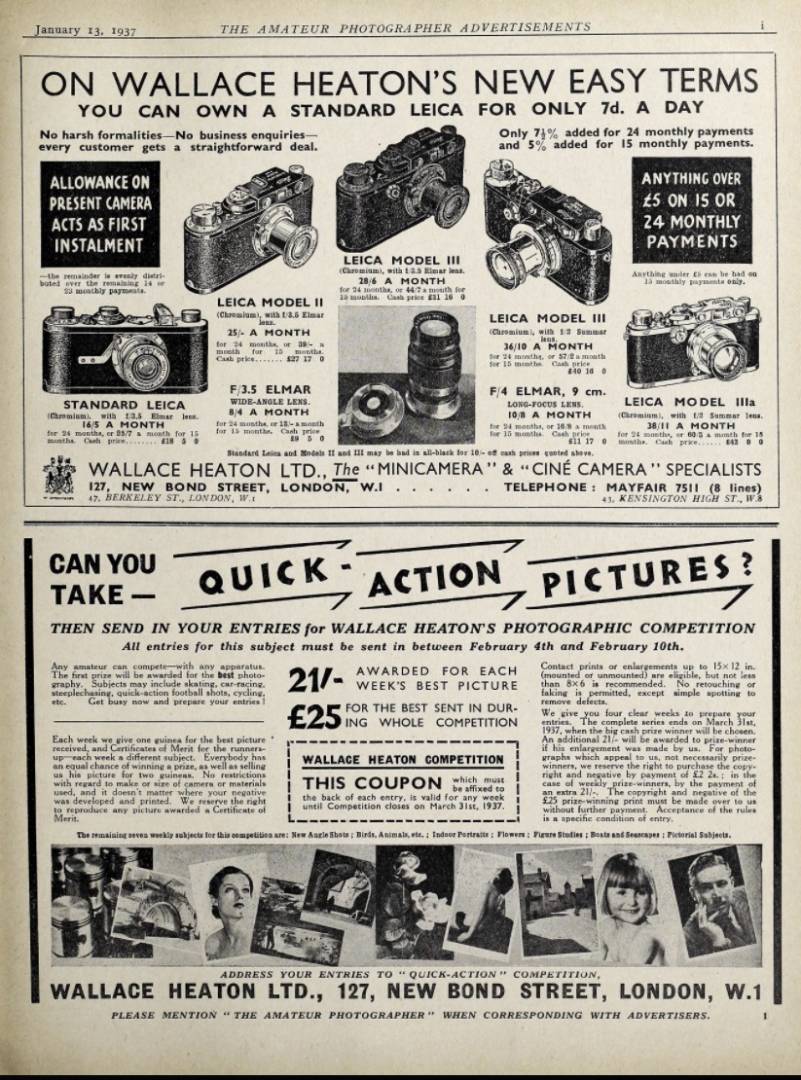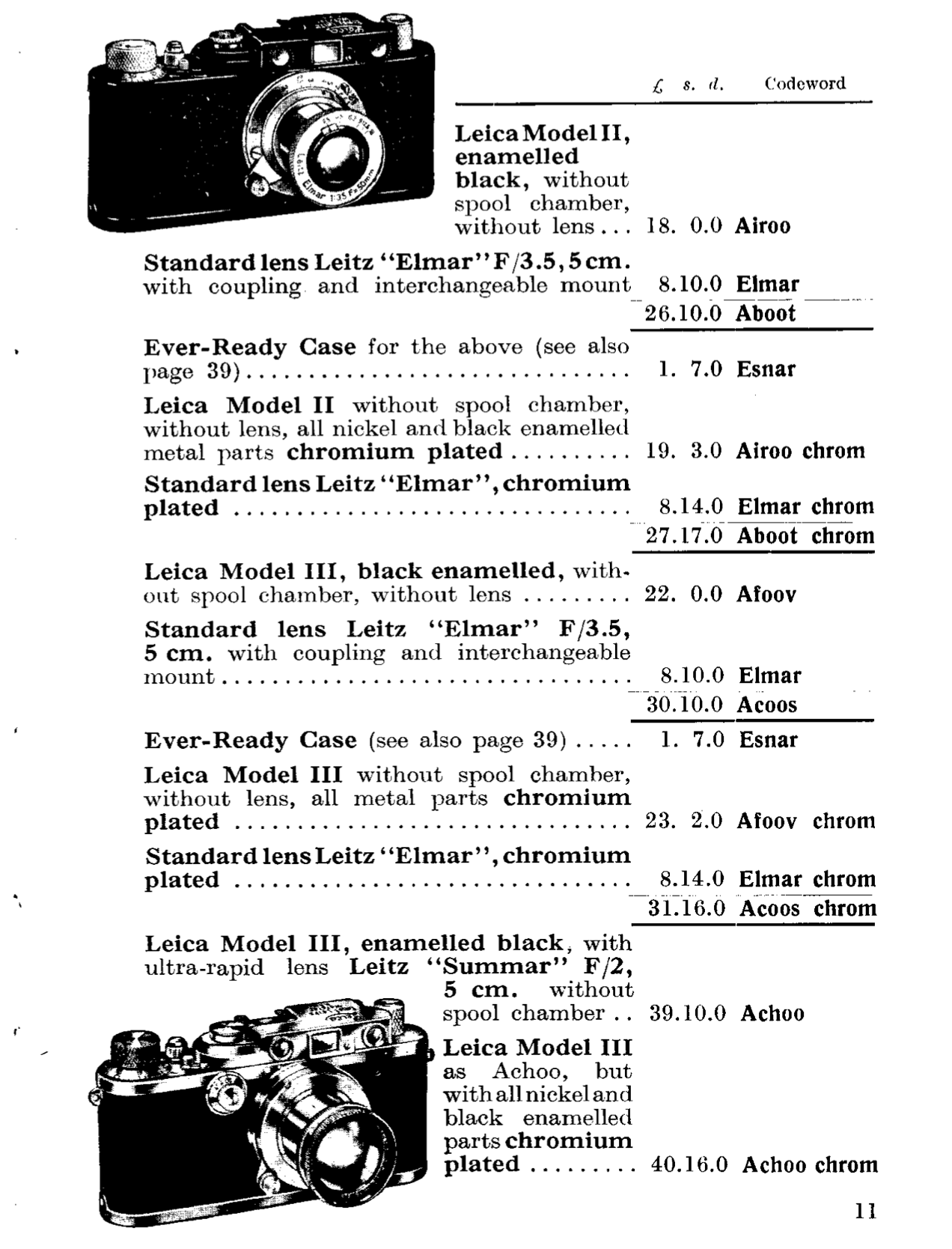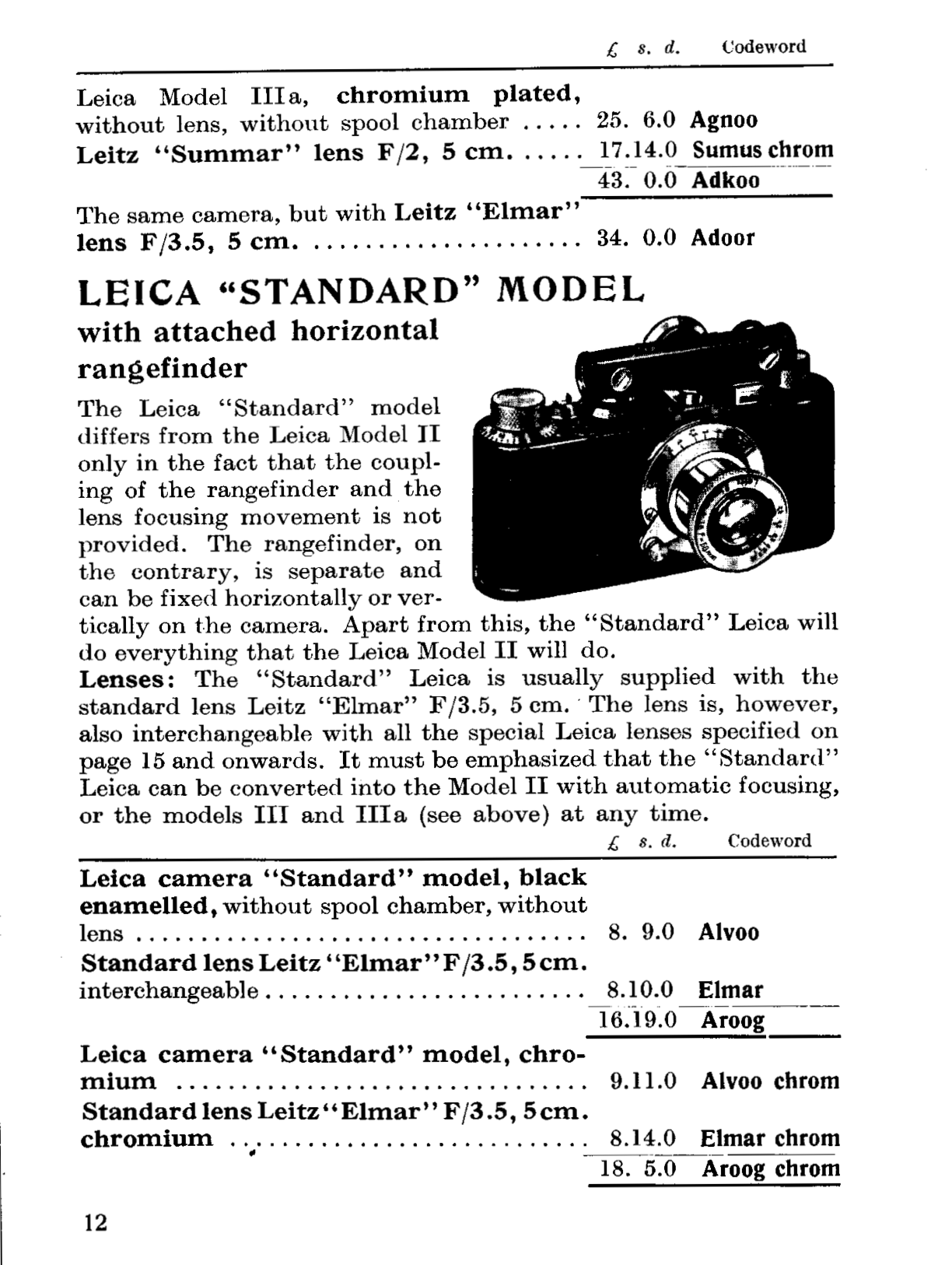If you are left reeling by the £5,000 price tag of the latest Leica creation, the Q2 Monochrom, spare a thought for what might have been. Did you know you could get a Leica camera and a lens for only 7 pence a day? Queue here…
Unfortunately, it’s a once-upon-a-time moment. You’d have to have been alive and kicking (and with a good credit rating if they had such things in those days) no fewer than 84 years ago.
New easy terms advertised by one of Britain’s most famous photographic retailers, Wallace Heaton (“the minicam and cine camera specialists”) would sell you a Leica Standard camera with f/3.5 Elmar lens for seven pence a day over 24 months.
That’s 7d, in old pennies, equivalent to about 3p in new money. So for only £18.25 (£18.5s.0d) or just over 80p a month, the shining new Leica could be yours. What a bargain you might think…
Pushing the boat out
If you fancied pushing the boat out a bit, you could have had the Model II kit, with its coupled rangefinder, for £27.85 or 25 shillings a month (£1.25). The even more tasty Model III, with slow-speed exposure and a fast Summar lens, cost a whopping £40.80 cash, or a wallet-busting twenty-eight and six (£1.43) a month.
If you wanted just a lens, the 5cm Elmar would have cost the equivalent of £9.25. A pricey optic.
One interesting fact is that all the cameras were cheaper with a black finish. Only 50p cheaper, admittedly, but that was a significant sum in 1937, enough to influence buying decisions. Now, black-paint cameras from that era tend to attract a premium, so the cheaper camera would have been the better investment if you lived that long, of course.
The Leica catalogue, published in 1936, just before the Wallace Heaton advertisement, gives the official information on the prices. The famous Leica codes (FILCA, for instance, for the metal film cassette) add some fun to the catalogue. Would you like an AIROO and an ELMAR? If so, better buy an ABOOT combination.
Click image to enlarge
Of course, it’s easy to find amusement in these prices because they seem so ridiculously cheap by modern standards. Where our grandfathers in the 1930s thought in pounds and tens of pounds, we now think in hundreds and thousands. That’s what inflation does. It doesn’t make for easy comparisons because goods and services don’t always follow the same inflation trajectory. Nowadays, for instance, labour is much more expensive than mass-produced goods. In the 1930s, it was the other way round. Anyone on £1,000 a year could afford a servant. Now only the super-rich can aspire to employ live-in staff.
Expensive
A typical manual-worker in the mid-1930s would have earned between £1.50 and £3 per week, up to around £150 per annum. A professional could have expected to earn between £300 and £800 per annum, so these Leica prices have to be considered in this context. Even the humble Leica Standard in the advertisement probably cost the equivalent of around five weeks’ income for a typical Leica buyer, who probably wasn’t on subsistence income. If you fancy a bit of light reading on the subject, try this for size. Good luck!
Leicas have always been expensive, and these 1930s models were probably no more affordable, even at £25 a pop, than today’s Leicas film equivalent, the M-A, at £3.600.




It is interesting to note that the Wallace Heaton ad from 1937 shows a I Model A in place of a Standard. The I Model A disappeared from production around 1930/31 and was replaced by the Standard from around 1932/33. The hockey stick on the IA and the narrower rewind knob on the Standard are the giveaways. HP was the way of the world in those days as people did not have that kind of disposable income. Calculating purchasing power and affordability over long periods of time is a difficult task and most tables I have seen fail to take into account factors like mortgages and the range of things which we buy today compared to our predecessors from times gone by. I have all of the Leitz UK catalogues from the 1930s. One of the most interesting catalogues I have is one from 1938 which was used by the Dublin dealer, Pollocks, before and after WWII. It has the postwar prices written on it in pencil with some model substitution (eg IIIc instead of IIIb) and, in general, prices had more or less doubled during the period of WWII
As you say, the other thing that readers will note from the catalogue shown above is that during the 1930s chrome cameras were more expensive than their black paint equivalents, whereas the exact opposite is the case today. My late father bought a Super Baldina in January 1940 just a few weeks after his 24th birthday and the bill of sale for it has appeared on Macfilos. He seems to have paid 9 guineas cash for the purchase and the bill of sale contains a stamp to authenticate the transaction. The dealer at that time and several others in Dublin sold Leicas, but my father could never have risen to such a lofty purchase. Roll on to November 2020 and there is now no Leica dealer in Dublin. The existing dealer resigned from selling new Leicas a few months ago and is just selling off existing stock. He still sells most of the other major camera makes, of course. Is it time for the Bank of Leica?
William
That stamp, probably 2d, was indeed necessary for a legal receipt and the two pence represented stamp duty which was levied up to February 1971 and possibly longer in the Republic. All cheques had an embossed 2d duty stamp until that date; the customer would buy the book of cheques from the bank. I could bore for England on the subject of stamp duty…